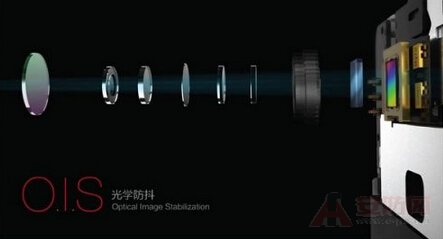What is optical image stabilization?
Optical image stabilization is currently the most widely recognized anti-shake technology. It compensates for the occurrence of jitter by moving parts, thus reducing the blurring effect of photos. Optical image stabilization relies on a special lens or CCD sensor structure to minimize image instability caused by jitter during operator use.
At present, the optical image stabilization technology is divided into two major factions, namely, the lens mobile optical image stabilization represented by the majority of lens manufacturers, and the CCD mobile optical image stabilization represented by emerging electronics manufacturers.
Optical image stabilization technology detects the slight movement of the gyroscope in the lens, and transmits the signal to the microprocessor to immediately calculate the amount of displacement to be compensated. Then, by compensating the lens group, the lens is shaken according to the direction and displacement of the lens. Compensation to effectively overcome image blur caused by camera vibration. Canon's IS system only takes a very short time to complete the movement of the IS lens set, so the effect is still very good. It is usually effective to prevent jitter with a shutter time shorter than 1/60s.

Anti-shake type
The effect of the optical image stabilization function is quite obvious. Under normal circumstances, turning on this function can increase the shutter speed of 2-3 speeds, so that the hand-held shooting will not be blurred, which is very obvious for beginners. In telephoto digital cameras, the effect is immediate.
Optical image stabilization is the most widely recognized anti-shake technology. It compensates for the occurrence of jitter by moving parts, thus reducing the blurring of photos. The optical anti-shake technology is divided into two major factions, namely, the lens mobile optical image stabilization represented by the majority of lens manufacturers, and the CCD mobile optical image stabilization represented by emerging electronics manufacturers. However, since the optical image stabilization needs to be realized by using additional components, the cost of the optical image stabilization system is also high, and the market price of the model equipped with the optical image stabilization system is still relatively expensive.
Lens anti-shake
Through the lens group, the anti-shake master relies on the magnetically wrapped suspension lens to effectively overcome the image blur caused by the camera vibration, which is more effective for the digital camera of the large zoom lens. Usually, the gyroscope in the lens detects a small movement, and transmits the signal to the microprocessor to immediately calculate the amount of displacement to be compensated. Then, by compensating the lens group, the lens is compensated according to the direction and displacement of the lens, and the compensation mirror is compensated. The group adjusts the position and angle accordingly to keep the light path stable, thus effectively overcoming image blur caused by camera vibration.
CCD anti-shake
The anti-shake principle realized by CCD is to achieve the purpose of anti-shake by relying on the floating of CCD. The principle is to fix the CCD on a bracket that can move up, down, left and right, and sense the direction and amplitude of camera shake through the gyroscope. Then the sensor transmits the data to the processor for screening and amplification, and calculates the amount of CCD movement that can cancel the jitter. .
Ningbo Kyson Cool Electronic Technology Co., Ltd. , https://www.kysonrefrigeration.com